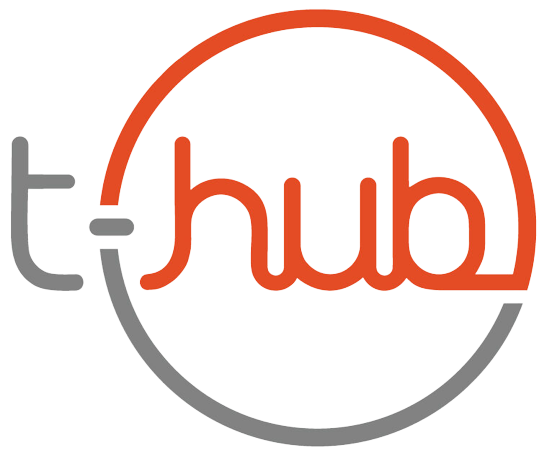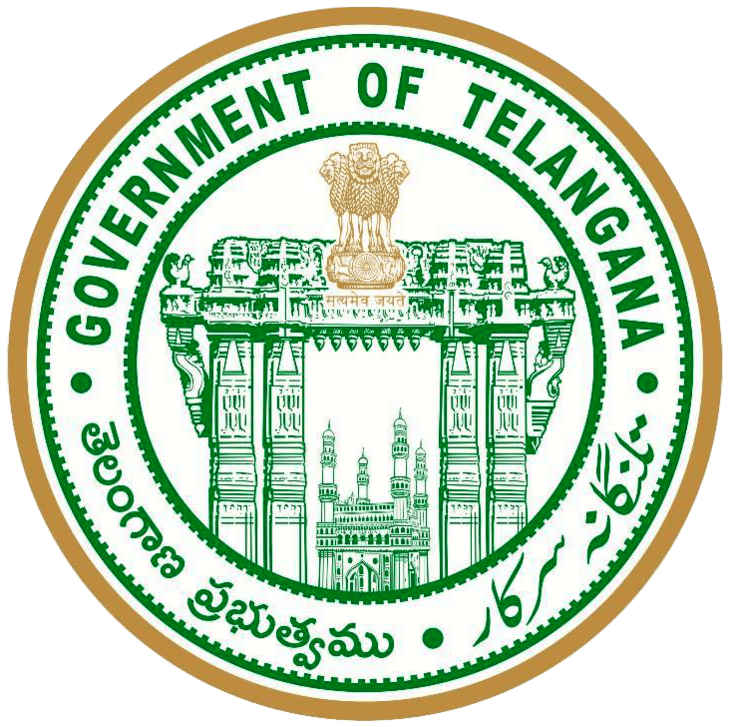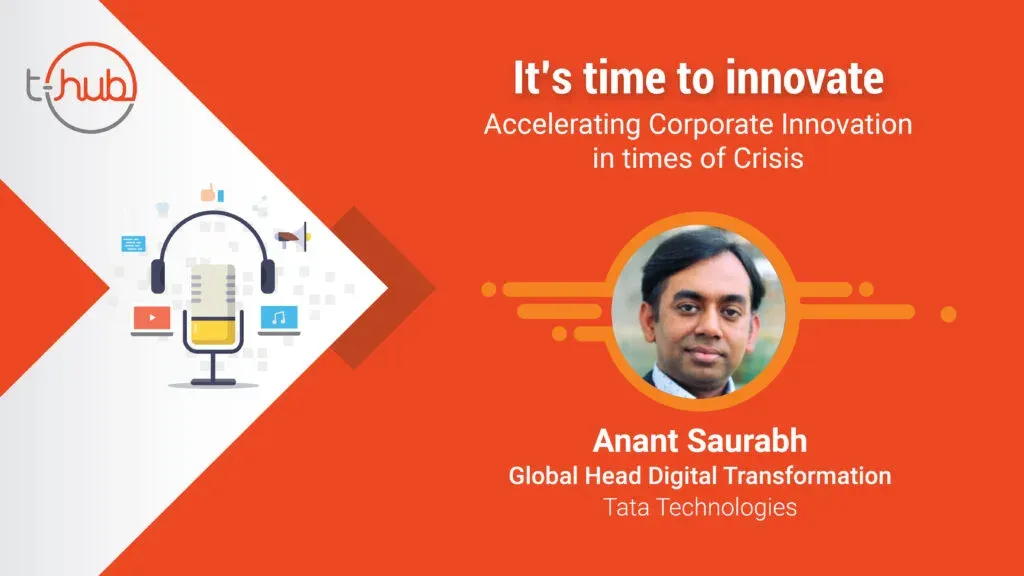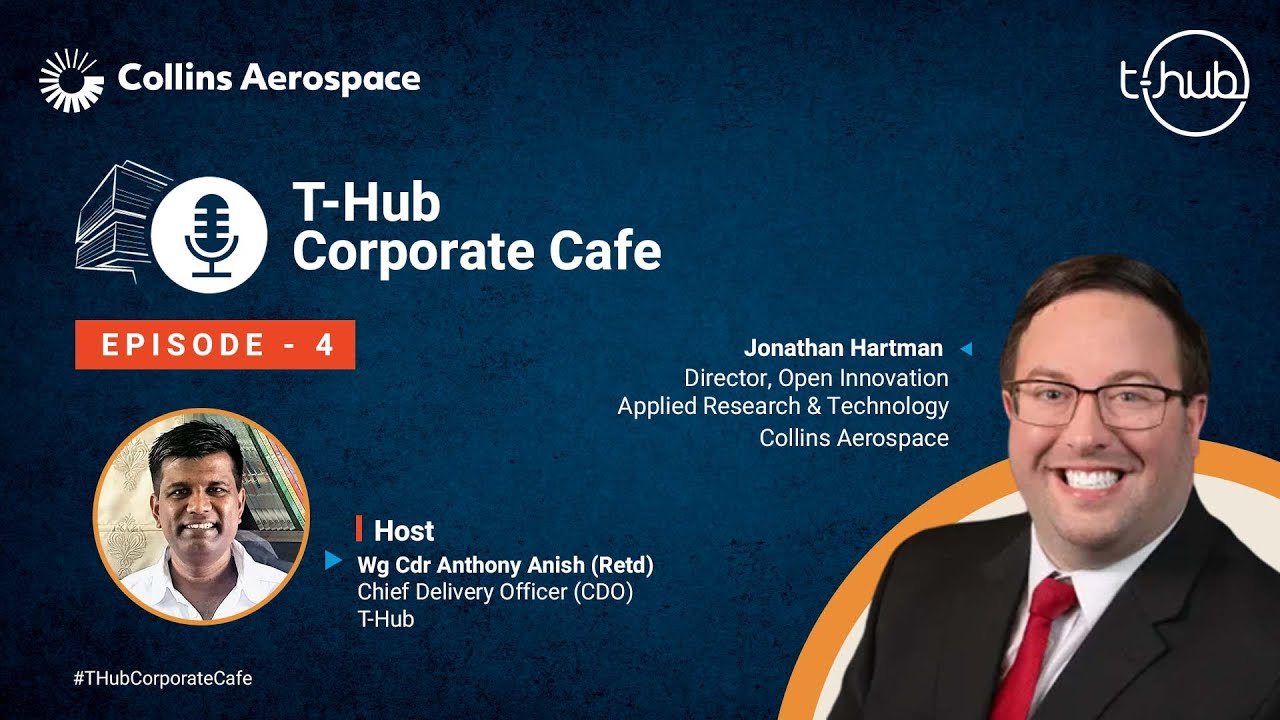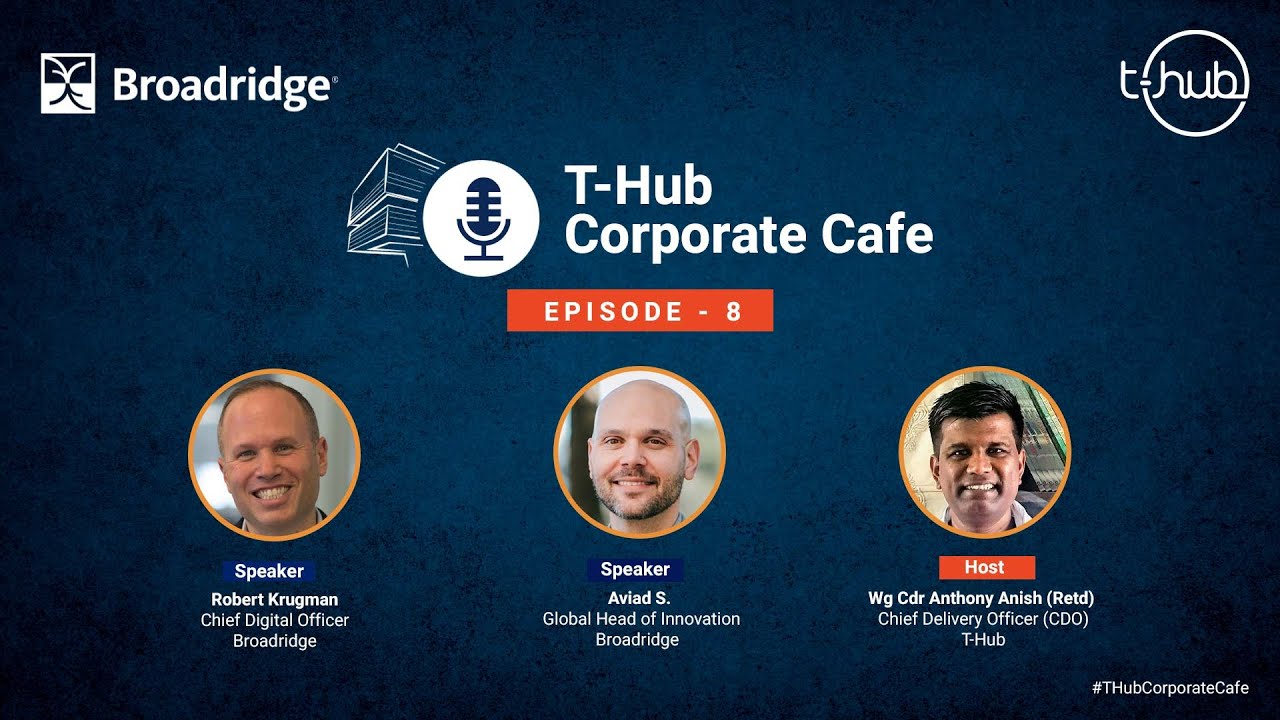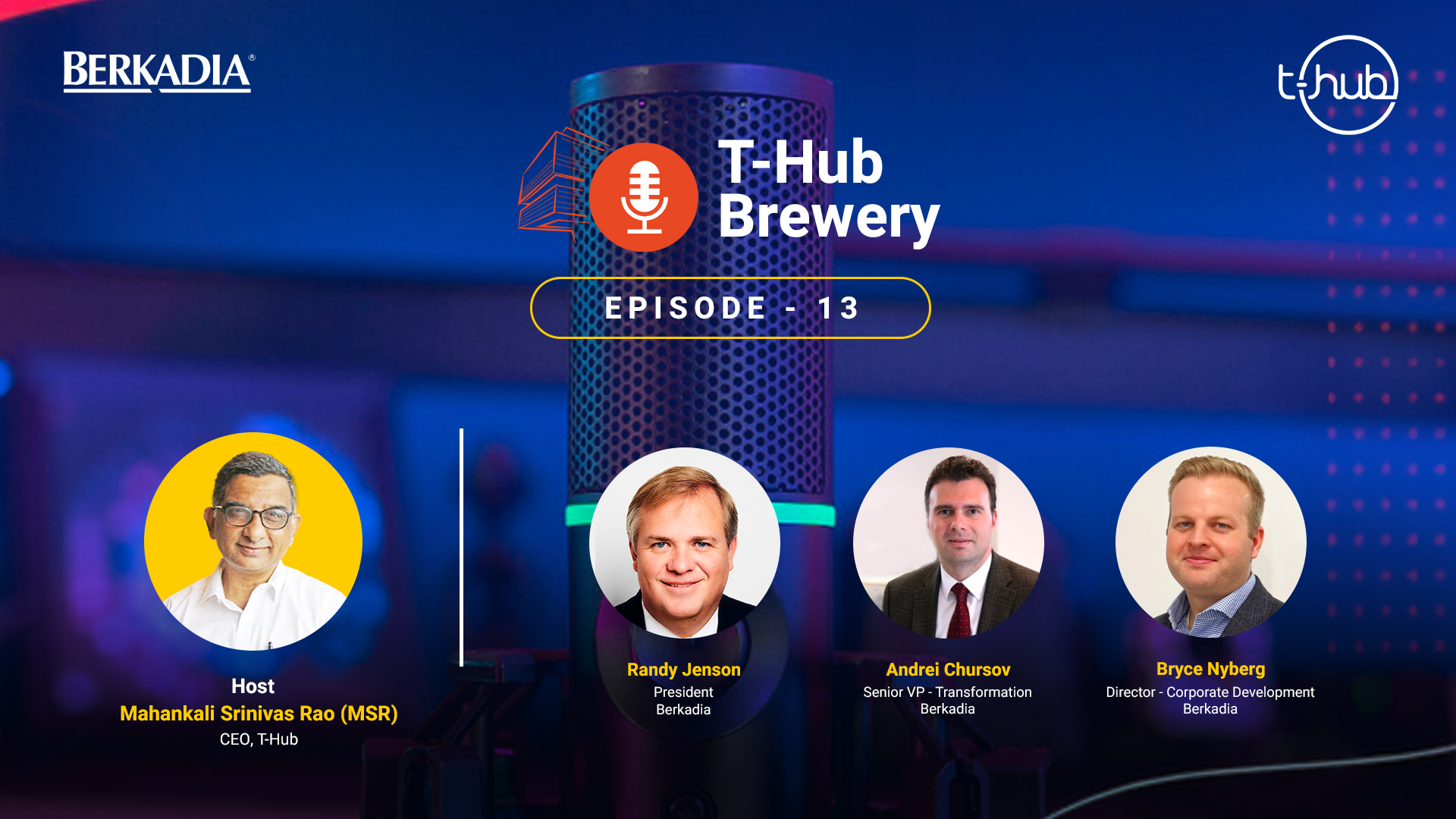The Coronavirus pandemic has placed extraordinary demands on the business community. Now, more than ever, it has become crucial for business leaders to assume a strong leadership role to navigate the unfamiliarity and uncertainty presented by COVID-19. We bring to you podcast series in which we interview leaders that are accelerating Corporate Innovation in times of crisis.
Anant Saurabh, Global Head, Digital Transformation, Tata Technologies, shares his perspective on the need for innovation.
I’m trying to make this podcast a little bit different, rather than talking about how to do and what to do and what exactly innovation means in the corporate world. Being in the innovation team, I would like to share my experiences of what we did last time and how things are happening.
Something a little bit more about our company. At a broad level, Our vision is to engineer a better world, we have the world to drive, build and farm by enabling our clients to realize better products. This requires a lot of creativity and innovation. First in identifying their purpose, business problems and challenges, through a common and simplified business language. This is very, very important because this representation and this language that we say it’s, it’s missing today, and we do a lot of things in that how we can convert those in and quite simplified business language that everybody can understand all stakeholder can understand the technology team can understand. And then second in architecting, developing and implementing solutions for their future. I strongly believe that bringing innovation in day to day activities or rather to say in everything that we do to solve the business problem that has led and commitment brings better results and business value than classical approach or breakthrough innovation. My team used to say it as innovation on the go.
Even I believe in the words of Sir Ken Robinson, who said creativity is as important as literacy. And we mean it.
This approach of innovation on the go, becomes more relevant in the times of crisis like COVID, which is imposed on us, I would like to say my experience with innovation during crisis. And during the journey of surviving and thriving. The transformation we went through was a difficult and challenging time while it was just in with the new way of working.
Also, I would like to talk about the changing scenario, which includes both internal and external factors due to COVID, from the perspective of our customers, especially from industries that we operate, automotive, aerospace and heavy, heavy industry. I think the current crisis has triggered the need to transform and establish every organization as a customer centric organization, so that we focus more and more on the experiences that we deliver, whether it’s through product, whether it’s services, whatever be to whatever customer. These are those customers who dare to dream, and we help them to take the first few months in the journey. It was the 6th March 2020. I was in France for a customer meeting and was starting an assignment which was quite challenging, which requires a new perspective to develop future business process model and digital solutions for designing and manufacturing products for future generations.
At the outset, about time, I came to the airport to board my return flight. I think that something terribly wrong was going to happen. Based on the news about the virus, the spread, and the lockdown and all those things, even though it was not very clear for our country perspective. But something was happening somewhere. And this premonition became a reality because as I landed and reached home, I was gone hunting. I was terrified not because of isolation for the next 14 days, but thinking about how we are going to work with my team, which demands creativity and innovation at every step in day to day activities.
Creating an innovative solution is an iterative, rigorous and unpredictable task, which needs a lot of brainstorming, augmenting discussion with teams, whiteboarding, and ideas scrapping together with the team. This also needs collaboration with a cross functional team and taking help from experts to global experts on the fly with close physical proximity with the people. The COVID crisis has revealed and further widened this flaw, challenging our way of working, which had brought remarkable result in the past.
And few weeks down the line, we finally faced the difficult situation, the burden of living in New Normal was upon us, we realized that we have to change our way of working, while working from home with virtual collaboration is the only option to survive. We had to walk along with our customers with their changing problems and challenges due to the uncertain business environment. For my team, for us, the question or need of the hour was not to survive or think about our productivity, it was about being innovative during creative work and solving our customer’s business problem, which has started taking twisting turn during these tough times, when we we go through disruption, we realize the need to infuse flexibility to gaze the pulse of the time and provide a personalized and tailored solution.
And whatever situation we are in now, being in the context of those situations, I would like to talk about key learnings and take away to spur innovation and creativity in the corporate environment. And I hope some of the things will definitely have to take it in your way in whatever you are doing.
First point, I would like to categorize as keeping the human aspect at the core. And this is from both an internal and external perspective. And when I say internal, I mean, the team who work on solving business problems like us and external I mean, the end users or consumers of the product that our client develops and manufactures, we created a lot of virtual collaboration assets, like virtual ideation, board, surveys to capture quickly, quickly understand and the A create a baseline of for all team understanding and day to day enhancement in their knowledge and the work that we used to do, to take teams mode sentiments and understanding of purpose behind the work. The meeting assignments recognition and appreciation which is very, very different you can say in pre COVID data. So now we started doing it on a daily, weekly and monthly basis. And the focus was not awarding someone; it was how we can recognize how we can bring a precision in whatever we do. So that team can get themselves motivated every day. And they can keep the lights burning for being creative, being innovative. And then mind games to understand the strength and potential of team members.
And very frequently 360 degree feedback within and across. All these to build excitement inspire people instill confidence in conviction, to think invest innovatively, even in remote environment.
To create a more realistic picture of consumer demand and expectation from the product in the future, considering post COVID scenarios. New normal and changing behaviors develop creative frameworks to plot various scenarios and users’ journey map. This helped us in bringing more clarity and visibility of unknowns while crafting and architecting digital solutions for the future so that our customer can prepare and minimize risk while sailing through the classes. In summary, we were dealing with the danger of distance through innovation. And while we were realizing these difficulties, our impact in being customer’s mind and visualizing what we have brought in the journey really gave a lot of satisfaction and a lot of motivation to work day by day, so hard that somehow we can help our customers.
Now, coming to the second point, I would like to call it – building the perspective window. And I think this is the time where we have to open our perspective and open our viewpoint and how we have taken this at the professional level and that I will try to summarize through one example. So as when we very quickly realized that COVID has revealed how sensitive the business model of any organization is to disruption and there is a need to infuse flexibility to gaze the appetite for change and impact on overall business. It is very critical that we establish connection between the business model of the organization the various business processes that run across business function, enterprise data model being data as the key, how the entire data model is architected across different application, the product portfolio, the new product launches, and whatever we have, going to transform the existing product. So, the product portfolio covers all those things and all relating with what value we are providing to the end users of the product. We never had such a business case or stakeholders expectation to do that. So, we created a framework by taking our understanding of the need of the hour to connect customer-centricity at every stage of product development and business function of the organization. For example, how to understand this can be relayed manufacturing processes, which connect the customers or how we can design the manufacturing process. So that they can get emotionally attached with the product even at that stage. For example, how much hardware or software we are aware about we can customize design and manufacture based on every customer’s needs. And we are trying to see how much deeper we can go in connecting customers at the various various touch points at the different stages of product development. And that means creation of use cases for every business function with respect to customer-centricity, and then characterize those transformation of business processes through innovation so that we know the priority, we know the impact and we know what value we are going to create for the end customer. And this leads to the third and last point that I want to make, which is about adopting technology sensibly. That means while being agile and taking smaller steps in implementing solutions, and embracing new and advanced technologies, we must keep an eye on future roadmap, purpose and value to the customer.
During COVID lockdown period, we have developed a framework to innovate at a granular level and integrate to the larger goal as we progress as our customers get pushed to roll out immediate cost cutting and efficiency improvement measures. And that you can figure out what everyone was talking about.
We felt that the bigger challenge was to ensure how it’s going to build organizations’ scalable digital future, if we are so granular in approach. To solve these problems while working with core manufacturing industry, we developed a methodology to design a digital world for the organization, which is our innovation during crisis to face challenges, which is evident in these distinct times like pandemic, the digital wall will help organization to not fall in the trap of technological race, not fall in the trap of always being focused on cost saving efficiency and productivity, the new normal and the world that is going to become after this crisis is something different. We have to focus more on customer experience, we are going to focus on the value that we are going to deliver to the customer. And while trying to fix cost and efficiency issues, we have to be more focused on larger goals for the long term in bringing customer-centricity experiences and value driven products for the future.
Now it’s time to wrap up. I would like to summarize our contribution in innovation during crisis. We at Tata Technologies have shared and supported the remarkable journey of transformation and innovation of many of our customers both with and without the trying times which COVID has brought upon us. The narrative that I have summarized has crystallized from the learnings gathered through these experiences. With one of the leading aircraft manufacturers as an example, it is almost fortunate that I was able to witness the robustness, which a framework guided by this approach can bring to all the dimensions of transformation, from high level strategy to root level projects, initiatives and interweave all of them harmoniously. So much so, that even after the setback from COVID, in terms of both time and money, their digital transformation roadmap is still inching closer towards success, delivering business value, which is helping achieve the overall guiding vision. The question then, is not to call out and prove the importance of innovation in the organization, but how it can be ingrained deep within the organizational DNA and how to address the urgency of realizing this dream.
We at T-Hub power corporate innovation through high impact partnerships. Know more, https://bit.ly/2QTnRSS.
